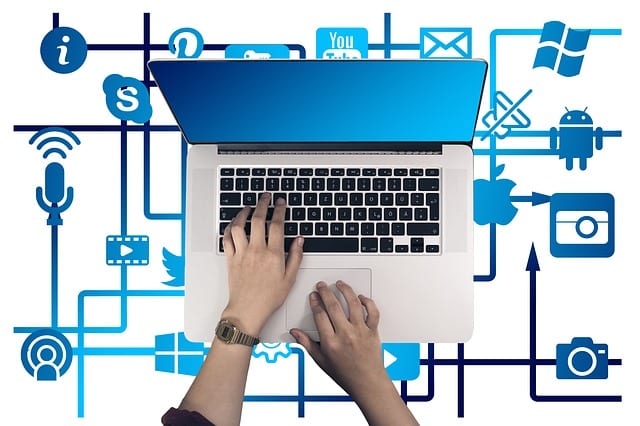LESSON 1
INTRODUCTION OF ICT

INTRODUCTION OF ICT

What is ICT?
Information and communications technology (ICT) is an extended term for information
technology (IT) which stresses the role of unified communications and the integration
of telecommunications (telephone lines and wireless signals), computers as well as
necessary software, its storage and the audio-visual systems, which enable all users to
access, store, transmit, and manipulate information. The term ICT is also used to refer
to the combining of audio-visual and telephone networks with computer
networks through a single cabling or link system. There are large economic incentives
(huge cost savings due to elimination of the telephone network) to merge the telephone
network with the computer network system using a single unified system of cabling,
signal distribution and management.However, ICT has no universal definition, as "the
concepts, methods and applications involved in ICT are constantly evolving on an
almost daily basis."The broadness of ICT covers any product that will store, retrieve,
manipulate, transmit or receive information electronically in a digital form e.g. personal
computers, digital television, email and even the modern day robots.
The last few decades have witnessed a tremendous & phenomenal growth in the field of
Information & Communication Technology (ICT) in education also which has influenced
life of people especially students in some way or the other. ICT is arguably the
technology area that has had the strongest impact on society during the past 60
years. The technology is visibly present in our use of computers, smart phones,
information search, robotics and intelligent agents, but, has an even greater impact as
an enabling technology for a large number of application areas, such as medicine and
healthcare, energy production and distribution, finance, public management and
transport logistics to name a few. This progress has enabled to get prompt access to
any required information. In these modern times of technological advancements,
children are more interested in trying out; hence, a teacher should act as a facilitator
and should encourage a child / student to advance technologically and in the right
direction. In the field of education, ICT can be used to enhance quality and value of
education especially through integration.Information and
Communication Technology can contribute to universal access to education, equityin
education, the delivery of quality learning and teaching, teachers’
professionaldevelopment and more efficient education management, governance and
administration. However, UNESCO takes a holistic and comprehensive approach to
promoting ICT in education.
ICT is the digital processing and utilisation of information by the use of electronic
computers. It comprises the storage, retrieval, conversion and transmission of
information. (IfuekoOmoiguiOkauru, 2011).
ICT (information and communications technology – or technologies) is an umbrella term
that includes any communication device or application, encompassing: radio, television,
cellular phones, computer and network hardware and software, satellite systems and so
on, as well as the various services and applications associated with them, such as
videoconferencing and distance learning. ICTs are often spoken of in a particular
context, such as ICTs in education, health care, or libraries. (Margaret Rouse 2005).
However, Margaret Rouse goes further to explain ICT as applying to software, and not
only hardware as seems to be the case in the other definitions. This difference isn’t so
obvious, as one can argue that, in order for the equipment mentioned in the other
definitions to serve their purpose, software (or an engine) is needed to run them.
ICT is the study, design, development, application, implementation, support or the
management of computer-based information systems. The term is commonly used as a
synonym for computers and computer networks, but it also encompasses other
information distribution technologies such as television and telephones. (Chandler,
Daniel; Munday, Rod, I. August 2012)
A branch of engineering dealing with the use of computers and telecommunications
equipment to store, retrieve, transmit and manipulate data is called ICT. (Daintith, John,
ed. 2009)
ICT covers all forms of computer and communications equipment and software used
Page 2 of 24
to create, design, store, transmit, interpret and manipulate information in its various
formats. Personal computers, laptops, tablets, mobile phones, transport systems,
televisions, and network technologies are just some examples of the diverse array of
ICT tools. (http://www.uq.edu.au/ICT/what-is-ICT 2012).
All the definitions share a similar notion that, information has to be generated and
shared. They also assert that, such information must be digital or electronic. The
definitions generally do not restrict ICT to only computers, but also telecommunications
equipment (mobile phones, printers, scanners etc) as well.
F UNCTIONAL DEFINITIONS
1.ICT refers to Information and Communication Technology which includes media
of communication (Radio, TV, Tapes, CDs), Information Machines (Computers,
Tablets), Telecommunication Technologies & Equipments (GPRS, Satellite
Phones & Mobiles).
2. CAL refers to Computer Aided Learning making use of computers, internet and
smart boards.
3. Communication is a basic prerequisite of all human performances & interaction
between two or more people in the form of transmission of thoughts, information
& commands by employing the different infrastructure available – verbal (oral) or
non-verbal (technological).
4. Technology means "science of craft". It is derived from Greek word ‘techne’
meaning "art, skill, cunning of hand"; and ‘logia’ which is the collection of
techniques, skills, methods and processes used in the production
of goods or services or in the accomplishment of objectives such as scientific
investigation.
For more Understanding about ICT Click the link below ↓


Mga Komento
Mag-post ng isang Komento